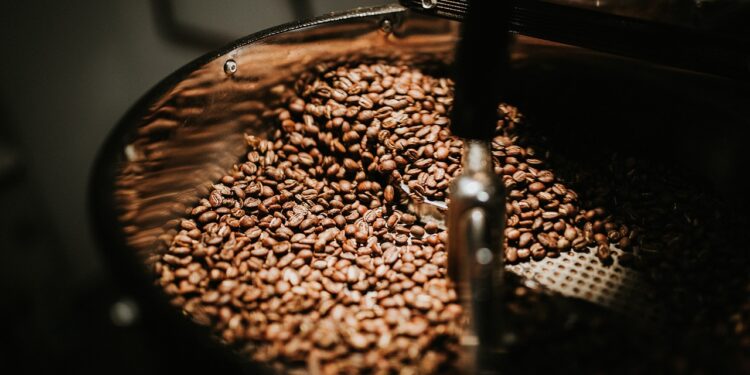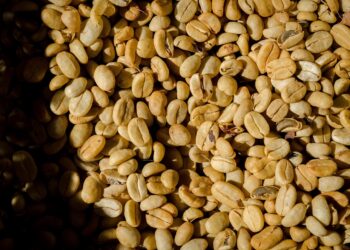Unlocking the Secrets of Espresso Beans: Aromatic Journeys in Every Cup
In the world of coffee, espresso stands out as a concentrated miracle. This beloved beverage captures the essence and traditions of coffee culture, offering a complexity and depth unmatched by other styles. Understanding espresso beans—what they are, how they’re roasted, and the journey they take from plant to cup—is key for both coffee enthusiasts and aficionados alike. Here’s an enlightening exploration into the aromatic journey of espresso beans, ensuring that every cup you savor is richly layered and deeply satisfying.
The Basics of Espresso Beans
Espresso beans are not a variety distinct from regular coffee beans. The distinction lies primarily in the choice of bean, the blend, and the roast. Typically, high-quality Arabica beans are preferred for their superior flavor and lower acidity compared to Robusta varieties, though some blends incorporate both for depth and body. What truly transforms these beans into espresso is the specific roasting and grinding process they undergo.
Roasting: The Art and Science
Roasting for espresso is an art that involves heating coffee beans to specific temperatures to enhance their oils and flavors, perfect for espresso’s concentrated form. Most espresso roasts fall into the ‘dark roast’ category, where the beans are roasted longer to produce a bold, rich taste that stands up to the intense extraction process of espresso machines.
During roasting, the beans undergo several stages—drying, browning, and development. Each stage is crucial, but it’s the development phase where the roaster’s skill truly shines, balancing temperature and timing to unlock optimal flavor profiles unique to each batch.
Grinding and Extraction
The grinding of espresso beans is equally important. The ideal espresso grind is fine, almost powder-like but with a gritty texture. This specific fineness ensures that the hot water during the espresso-making process can extract the maximum flavor in a very short time. An inconsistent or incorrect grind can lead to poor extraction, either under-extracting and resulting in a sour taste, or over-extracting and causing an overly bitter flavor.
Flavor Profile: What to Expect
Espresso is known for its robust flavor profile, characterized by a higher concentration of dissolved solids and having a creamy body, known as crema. The typical flavors you can expect include a balanced bitterness, often accompanied by hints of chocolate, nuts, or caramel, and a smooth, lingering sweetness. For those who appreciate nuanced tastes, single-origin espresso offers unique notes ranging from fruity to floral, depending on the bean’s origin and treatment.
Selecting Your Espresso Beans
When selecting espresso beans, the freshness is paramount. It’s advisable to purchase beans within weeks of their roasting date to ensure maximum freshness and flavor. Grind your beans just before brewing to maintain the essential oils and aromatic compounds. Also, consider experimenting with different blends and single-origin beans to explore a spectrum of flavors and find what pleases your palate the most.
The Brewing Process
Perfecting the brewing process demands precision and patience. The standard espresso shot uses about 7-9 grams of coffee extracted for 25-30 seconds, producing about 30 milliliters of espresso. Temperature and pressure are the critical parameters; typically, water should be at about 90-96 degrees Celsius (195-205 degrees Fahrenheit) with a pressure of about 9 bars created by the espresso machine.
Once you master these variables, you can start experimenting with ristrettos or lungos, variations that play with extraction times and quantities to produce different balances of flavor and intensity.
Pairing and Enjoyment
Espresso is versatile, not only enjoyed as a stand-alone drink but also as the base for other beverages like lattes, cappuccinos, and Americanos. Its intense flavor also makes it an excellent companion to pastries and desserts, particularly those containing chocolate or nuts.
Preservation and Storage
To preserve the integrity of your espresso beans, store them in a cool, dark place in an airtight container. Exposure to air, light, and moisture are enemies of fresh, flavorful coffee. By properly storing your beans, you ensure the longevity of their freshness and flavor.
Conclusion: Embracing the Espresso Experience
Every cup of espresso offers a complex, flavorful experience that transports coffee lovers on an aromatic journey. By understanding the nuances of espresso beans—from the selection and roasting to grinding and brewing—you can enhance your enjoyment and appreciation of this potent brew. Whether you’re a seasoned espresso drinker or new to the world of coffee, taking the time to explore and understand the layers of espresso will deepen your coffee experience, one cup at a time.
Remember, the key to a perfect espresso lies in the bean, its roast, and your dedication to the craft of coffee-making. Embrace the journey toward espresso excellence, and enjoy the aromatic adventures that await in every cup.





